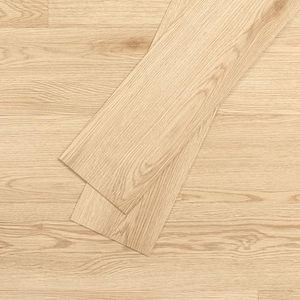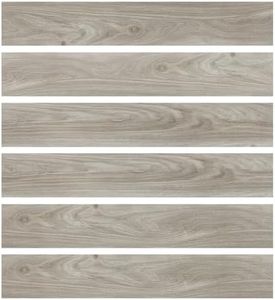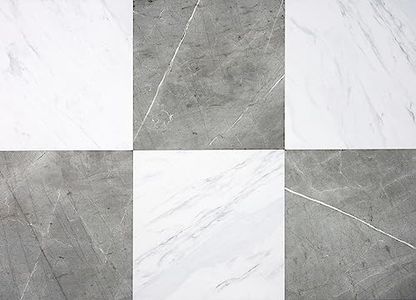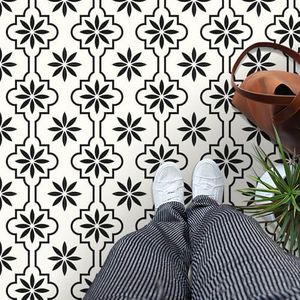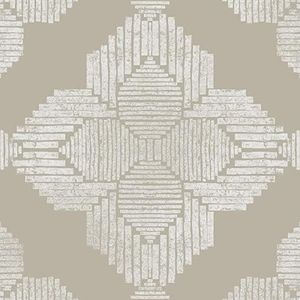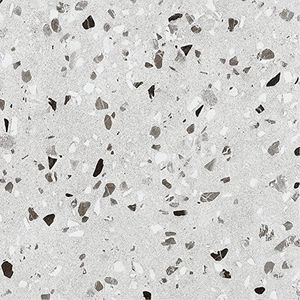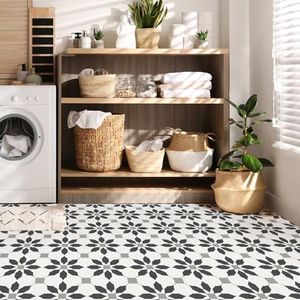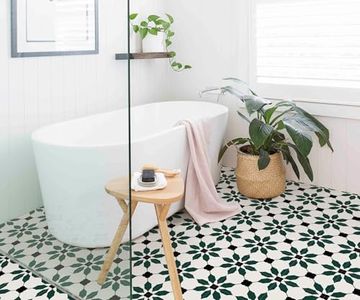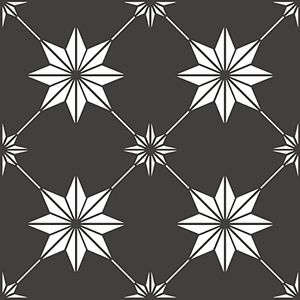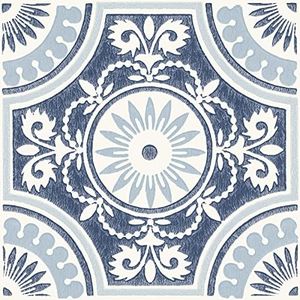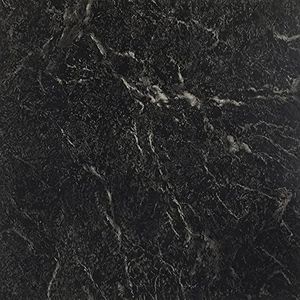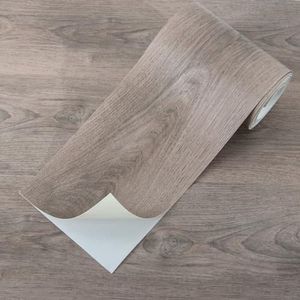We Use CookiesWe use cookies to enhance the security, performance,
functionality and for analytical and promotional activities. By continuing to browse this site you
are agreeing to our privacy policy
10 Best Peel And Stick Floor Tiles
From leading brands and best sellers available on the web.Buying Guide for the Best Peel And Stick Floor Tiles
Peel-and-stick floor tiles are a popular and convenient solution for updating floors without needing professional installation. The key to choosing the right tiles involves understanding several key features and how they align with your needs, your space, and your style preferences. It's helpful to think about where the tiles will go, how much foot traffic the area gets, and how much effort you want to put into maintenance in the future.MaterialThe material of peel-and-stick floor tiles determines their look, feel, and durability. Common materials include vinyl, laminate, and sometimes stone composite. Vinyl is flexible, water-resistant, and great for most rooms, especially kitchens or bathrooms. Laminate may look more natural but isn’t always as water-resistant. Stone composites tend to be heavier and more robust but can be harder to cut and install. Think about whether the tile needs to withstand moisture, heavy use, or just add a decorative touch; for wet areas, stick with vinyl or waterproof options.
ThicknessThickness refers to how robust and substantial the tile feels underfoot and how well it covers underlying floors. Thinner tiles (around 1-2 mm) are easier to cut and fit over smooth, even surfaces but can show imperfections underneath. Medium thickness (around 3-4 mm) offers more comfort and durability, making them a good all-rounder choice for most spaces. Thicker tiles (over 4 mm) provide additional cushioning and help hide small floor flaws but may make transitions between rooms less smooth. Consider what your floor is like now and whether you want extra comfort or insulation.
Adhesive QualityAdhesive quality impacts how well the tiles stick to your floor and how long they last without lifting or shifting. Some tiles have stronger adhesives designed for high-traffic areas or damp places, while basic options are better for low-traffic, dry rooms. If you plan to lay tiles in kitchens, bathrooms, or entryways, look for tiles marketed as extra-sticky, waterproof, or suitable for those spaces. For bedrooms or less-used areas, standard adhesive is usually fine.
Water ResistanceWater resistance indicates how well the tiles handle exposure to spills or moisture. Fully waterproof tiles are suited to bathrooms, laundry rooms, or kitchens, where water is frequently present. Water-resistant (not waterproof) tiles might handle the occasional spill but shouldn't be used in very wet areas. If you're working with spaces prone to moisture, prioritize waterproof or highly water-resistant tiles for lasting results.
Texture and FinishTexture and finish describe how the tile feels and looks once installed. Smooth tiles are easy to clean but may be slippery when wet. Textured tiles provide more grip, making them safer in bathrooms or entryways, but they can trap dirt more easily. Finishes range from matte to glossy or even realistic wood or stone looks. Think about how much maintenance you're willing to do and whether slip resistance is a priority in your chosen area.
Tile Size and PatternThe size and pattern of the tiles influence how your finished floor will appear. Larger tiles cover more area quickly and create a sleek, modern look, but might require more cutting in small spaces. Smaller tiles can be more flexible in tricky areas and allow for intricate designs. Patterns range from simple to bold, and it's best to choose a style that fits your décor and room size; larger patterns suit big spaces, while small, subtle designs work well in compact rooms.
Ease of RemovalIf you think you might redecorate or move soon, the ease of removal could matter. Some peel-and-stick tiles are designed for temporary use and can be pulled up without damaging the floor underneath, ideal for renters or those who like to change styles often. Other tiles have strong adhesives intended for long-term use and can be hard to remove. Choose based on how permanent you want the update to be.
